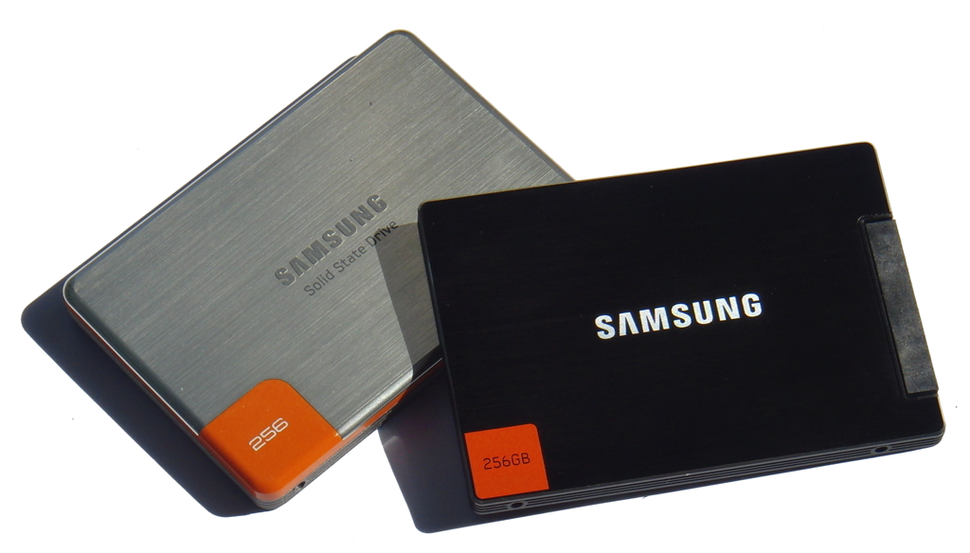120GB, 250GB, 500GB, 750GB & 1TB Models Tested
by Anand Lal Shimpion July 25, 2013 1:53 PM EST
- Posted in
- Storage
- SSDs
- Samsung
- TLC
- Samsung SSD 840
137 Comments
|
137 Comments
Introduction & PricingInside the Drives & Spare AreaEndurance: Not a Problem Even at 19nmTurboWrite: MLC Performance on a TLC DriveRAPID: PCIe-like Performance from a SATA SSDPerformance Consistency & Testing TRIMAnandTech Storage Bench 2013Random & Sequential PerformancePerformance vs. Transfer SizeAnandTech Storage Bench 2011Power ConsumptionFinal Words
I’m continually amazed by Samsung’s rise to power in the SSD space. If you compare their market dominating products today to what we were reviewing from Samsung just a few years ago you’d assume they came from a different company. The past three generations of Samsung consumer SSDs have been good, but if you focus exclusively on the past two generations (830/840) they’ve been really good.
Last year Samsung bifurcated its consumer SSD lineup by intoducing the 840 Pro in addition to the vanilla 840. We’d seen other companies explore a similar strategy, but usually by playing with synchronous vs asynchronous NAND or sometimes just using different NAND suppliers between lines. Samsung used NAND to differentiate the two but went even more extreme. The non-Pro version of the 840 was the first large scale consumer SSD made with 3-bit-per-cell MLC NAND, more commonly known as TLC (triple-level-cell) NAND. Companies had toyed with the idea of going TLC well before the 840’s release but were usually stopped either by economic or endurance realities. The 840 changed all of that. Although it didn’t come with tremendous cost savings initially, over time the Samsung SSD 840 proved to be one of the better values on the market — you’d just have to get over the worry of wearing out TLC NAND.
Despite having a far more limited lifespan compared to its 2bpc MLC brethren, the TLC NAND Samsung used in its 840 turned out to be quite reliable. Even our own aggressive estimates pegged typical client write endurance on the 840 at more than 11 years for the 128GB model.
Samsung 19nm TLC NAND
We haven’t seen Samsung’s love of TLC embraced by other manufacturers. The most significant contrast actually comes from Micron, another NAND supplier turned SSD manufacturer, and its M500. Relying on 2bpc MLC NAND, the M500 gets its cost down by using a combination of large page/block sizes (to reduce overall die area) as well as aggressively embracing the latest NAND manufacturing processes (in this case 20nm). That’s always been the Intel/Micron way — spend all of your time getting to the next process node quickly, and drive down cost that way rather than going TLC. The benefit of the TLC approach is the potential for even more cost reduction, but the downside is it usually takes a while to get production to yield high enough endurance TLC to make it viable for use in SSDs.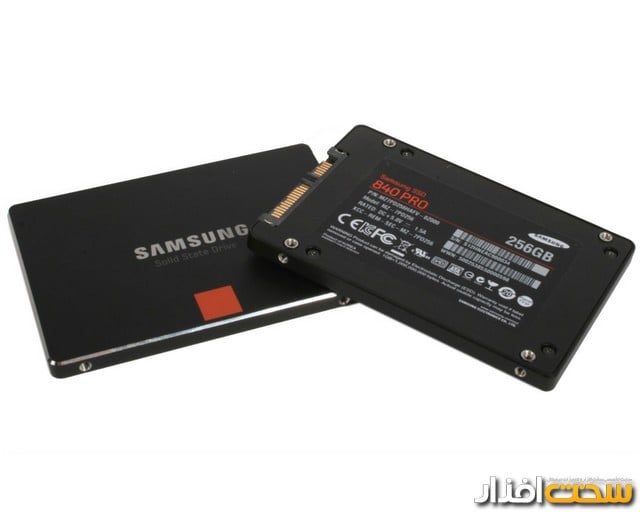 The question of which is quicker is pretty simple to answer. If we look at the 25nm and 20nm generations from IMFT, the manufacturer was able to get down to new process nodes quicker than Samsung could ship TLC in volume.
The question of which is quicker is pretty simple to answer. If we look at the 25nm and 20nm generations from IMFT, the manufacturer was able to get down to new process nodes quicker than Samsung could ship TLC in volume.
The discussion then shifts to whether or not TLC makes sense at that point, or if you’d be better off just transitioning to the next process node on MLC. Samsung clearly believes its mainstream TLC/high-end MLC split makes a lot of sense, and seeing how the 840 turned out last time I tend to agree. It’s not the only solution, but given how supply constrained everyone is on the latest NAND processes this generation — any good solution to get more die per wafer is going to be well received. Samsung doesn’t disclose die areas of its NAND, so we unfortunately can’t tell just how much more area efficient its TLC approach is compared to IMFT’s 128Gb/16K page area efficient 20nm MLC NAND.
As with any other business in the tech industry, it turns out that a regular, predictable release cadence is a great way to build marketshare. Here we are, around 9 months after the release of the Samsung SSD 840 and we have its first successor: the 840 EVO.
Here we are, around 9 months after the release of the Samsung SSD 840 and we have its first successor: the 840 EVO.
As its name implies, Samsung’s SSD 840 EVO is an evolution over last year’s SSD 840. The EVO still uses 3-bit-per-cell TLC NAND, but it moves to a smaller process geometry. Samsung calls its latest NAND process 10nm-class or 1x-nm, which can refer to feature sizes anywhere from 10nm to 19nm but we’ve also heard it referred to as 19nm TLC. The new 19nm TLC is available in capacities of up to 128Gbit per die, like IMFT’s latest 20nm MLC process. Unlike IMFT’s 128Gb offering, Samsung remains on a 8KB page size even with this latest generation of NAND. The number of pages per block is also more like IMFT’s previous 64Gbit 20nm MLC at 256:
|
IMFT vs. Samsung NAND Comparison |
||||||||||||||
|
|
IMFT 20nm MLC |
IMFT 20nm MLC |
Samsung 19nm TLC |
Samsung 21nm TLC |
Samsung 21nm MLC |
|||||||||
|
Bits per Cell |
2 |
2 |
3 |
3 |
2 |
|||||||||
|
Single Die Max Capacity |
64Gbit |
128Gbit |
128Gbit |
128Gbit |
64Gbit |
|||||||||
|
Page Size |
8KB |
16KB |
8KB |
8KB |
8KB |
|||||||||
|
Pages per Block |
256 |
512 |
256 |
192 |
128 |
|||||||||
|
Read Page (max) |
100 µs |
115 µs |
? |
? |
? |
|||||||||
|
Program Page (typical) |
1300 µs |
1600 µs |
? |
? |
? |
|||||||||
|
Erase Block (typical) |
3 ms |
3. 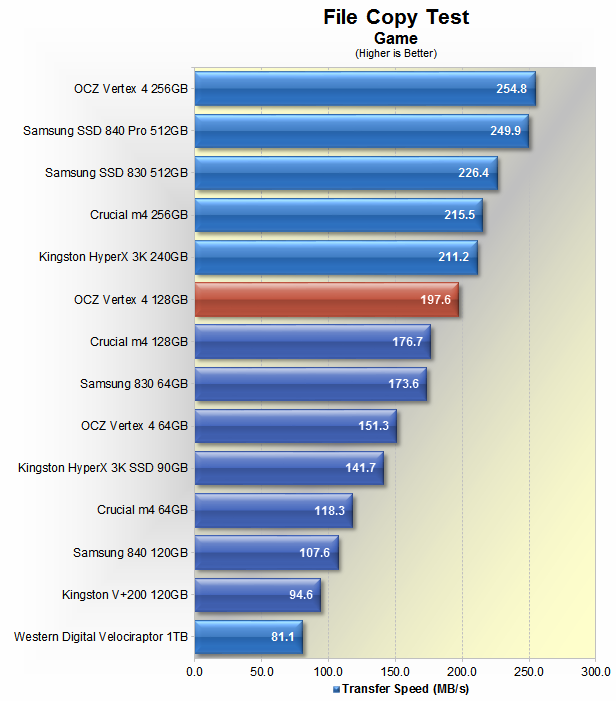 8 ms 8 ms |
? |
? |
? |
|||||||||
|
Die Size |
118mm2 |
202mm2 |
? |
? |
? |
|||||||||
|
Gbit per mm2 |
0.542 |
0.634 |
? |
? |
? |
|||||||||
|
Rated Program/Erase Cycles |
3000 |
3000 |
1000 — 3000 |
1000 — 3000 |
3000 (?) |
|||||||||
The high level specs, at least those Samsung gives us, points to an unwillingness to sacrifice latency even further in order to shrink die area. The decision makes sense since TLC is already expected to have 50% longer program times than 2bpc MLC. IMFT on the other hand has some latency to give up with its MLC NAND, which is why we see the move to 2x larger page and block sizes with its 128Gbit NAND die. Ultimately that’s going to be the comparison that’s the most interesting — how Samsung’s SSD 840 EVO with its 19nm TLC NAND stacks up to Crucial’s M500, the first implementation of IMFT’s 128Gbit 20nm MLC NAND.
The decision makes sense since TLC is already expected to have 50% longer program times than 2bpc MLC. IMFT on the other hand has some latency to give up with its MLC NAND, which is why we see the move to 2x larger page and block sizes with its 128Gbit NAND die. Ultimately that’s going to be the comparison that’s the most interesting — how Samsung’s SSD 840 EVO with its 19nm TLC NAND stacks up to Crucial’s M500, the first implementation of IMFT’s 128Gbit 20nm MLC NAND.
Modern Features
Along with the NAND update, the EVO also sees a pretty significant controller upgrade. The underlying architecture hasn’t changed, Samsung’s MEX controller is still based on the same triple-core Cortex R4 design as the previous generation MDX controller. The cores now run at 400MHz compared to 300MHz previously, which helps enable some of the higher performance on the EVO. The MEX controller also sees an update to SATA 3.1, something we first saw with SanDisk’s Extreme II. SATA 3. 1 brings a number of features, one of the most interesting being support for queued TRIM commands.
1 brings a number of features, one of the most interesting being support for queued TRIM commands.
The EVO boasts hardware AES-256 encryption, and has its PSID printed on each drive label like Crucial’s M500. In the event that you set and lose the drive’s encryption key, you can use the PSID to unlock the drive (although all data will be lost). At launch the EVO doesn’t support TCG Opal and thus Microsoft’s eDrive spec, however Samsung tells us that a firmware update scheduled for September will enable both of these things — again bringing the EVO to encryption feature parity with Crucial’s M500.
As one of the world’s prominent DRAM makers, it’s no surprise to find a ton of DRAM used to cache the firmware and indirection table on the EVO. DRAM size scales with capacity, although Samsung tosses a bit more than is necessary at a couple capacity points (e.g. 250GB).
|
Samsung SSD 840 EVO DRAM |
|||||||
|
|
120GB |
250GB |
500GB |
750GB |
1TB |
||
|
DRAM Size |
256MB LPDDR2-1066 |
512MB LPDDR2-1066 |
512MB LPDDR2-1066 |
1GB LPDDR2-1066 |
1GB LPDDR2-1066 |
||
The move to 19nm 128Gbit TLC NAND die paves the way for some very large drive capacities.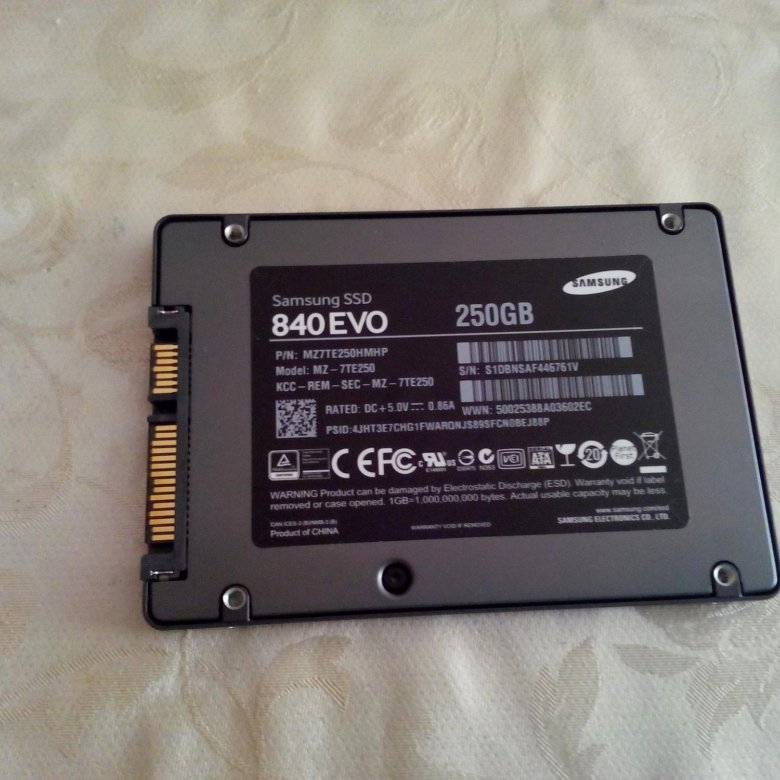 Similar to Crucial’s M500, the 840 EVO is offered in configurations of up to 1TB.
Similar to Crucial’s M500, the 840 EVO is offered in configurations of up to 1TB.
|
Samsung SSD 840 EVO Specifications |
||||||||||||
|
|
120GB |
250GB |
500GB |
750GB |
1TB |
|||||||
|
Controller, Interface |
Samsung MEX, SATA 3.1 |
|||||||||||
|
NAND |
Samsung 19nm 3bpc TLC Toggle DDR 2.0 NAND |
|||||||||||
|
Form Factor |
2.  5″ 7mm 5″ 7mm |
|||||||||||
|
Max Sequential Read |
|
|||||||||||
|
Max Sequential Write |
|
|
||||||||||
|
Max 4KB Random Read |
|
|
|
|||||||||
|
Max 4KB Random Write |
|
|
|
|||||||||
|
Encryption |
AES-256 FDE, PSID printed on SSD label |
|||||||||||
|
Warranty |
3 years |
|||||||||||
I’ll get to the dissection of performance specs momentarily, but you’ll notice some very high peak random and sequential performance out of these mainstream drives. The peak performance improvement over last year’s 840 is beyond significant. The keyword there is peak of course.
The peak performance improvement over last year’s 840 is beyond significant. The keyword there is peak of course.
Pricing
Samsung expects the 840 EVO to be available in the channel at the beginning of August. What we have in the table below are suggested MSRPs, which as long as supply isn’t limited usually end up being higher than street prices:
|
SSD Pricing Comparison — 7/24/2013 |
|||||||
|
|
120/128GB |
240/250/256GB |
480/500/512GB |
750GB |
960GB/1TB |
||
|
Crucial M500 |
$120.  99 99 |
$193.56 |
$387.27 |
|
$599.99 |
||
|
Intel SSD 335 |
|
$219.99 |
|
|
|
||
|
Samsung SSD 840 |
$98.44 |
$168.77 |
$328.77 |
|
|
||
|
Samsung SSD 840 EVO |
$109.  99 99 |
$189.99 |
$369.99 |
$529.99 |
$649.99 |
||
|
Samsung SSD 840 Pro |
$133.49 |
$230.95 |
$458.77 |
|
|
||
|
SanDisk Extreme II |
$129.99 |
$229.77 |
$449.99 |
|
|
||
|
SanDisk Ultra Plus |
$96.  85 85 |
$174.29 |
|
|
|
||
|
OCZ Vertex 450 |
$129.99 |
$246.84 |
|
|
|
||
Prices are a bit higher than the outgoing Samsung SSD 840, which makes sense since we’re looking at the beginning of the cost curve of a new process node. Crucial’s highly sought after $600 960GB M500 seems finally back in stock just in time for the EVO to go head to head with it. Samsung is expecting roughly a $50 premium for the 1TB EVO over the Crucial solution, but over time I’d expect that gap to shrink down to nothing (or in favor of Samsung).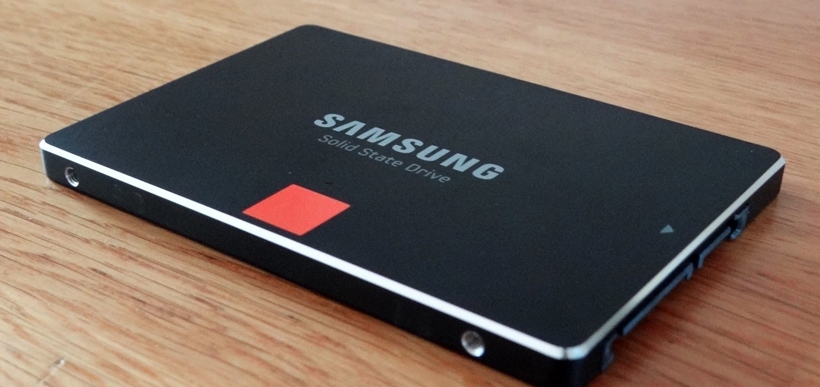 The EVO is considerably more affordable than Samsung’s 840 Pro, and the higher capcacity points are at particularly tempting prices.
The EVO is considerably more affordable than Samsung’s 840 Pro, and the higher capcacity points are at particularly tempting prices.
Inside the Drives & Spare Area
Introduction & PricingInside the Drives & Spare AreaEndurance: Not a Problem Even at 19nmTurboWrite: MLC Performance on a TLC DriveRAPID: PCIe-like Performance from a SATA SSDPerformance Consistency & Testing TRIMAnandTech Storage Bench 2013Random & Sequential PerformancePerformance vs. Transfer SizeAnandTech Storage Bench 2011Power ConsumptionFinal Words
Tweet
PRINT THIS ARTICLE
Samsung 840 EVO SSD: Tested At 120, 250, 500, And 1000 GB
Skip to main content
When you purchase through links on our site, we may earn an affiliate commission. Here’s how it works.
Imagine the following conversation between two Samsung executives:
«What are we going to do tonight?”. Suit number two replies, “The same thing we do every night. Try and take over the world.”
Try and take over the world.”
Samsung’s previous-gen 470 and 830 SSDs
«Yeah, okay. How?»
«Branded memory products.»
«Memory products? I’m sold. Let’s do it.»
And so that’s what the company is doing. In an era where everything needs DRAM and NAND flash, the fabricator is king. If you’re the largest fabricator…well, you’re halfway there. This is a target-rich environment, too. With SSD shipments still accelerating, it seems like any company could stay solvent selling solid-state storage. But that’s just not the case. This market is dominated by the companies producing the NAND, and Samsung’s biggest.
Working its way to the top of the SSD space didn’t happen overnight, though. It took successive products offering strong performance, enough time to reassure folks that the drives are reliable, and ginormous quantities of flash.
Samsung’s first drives were a lot like other early SSDs. I call them proto-SSDs; they’re the missing link between old-school flash-based storage and more modern architectures, which we were introduced to roughly around the time Intel launched its X25-M and -E.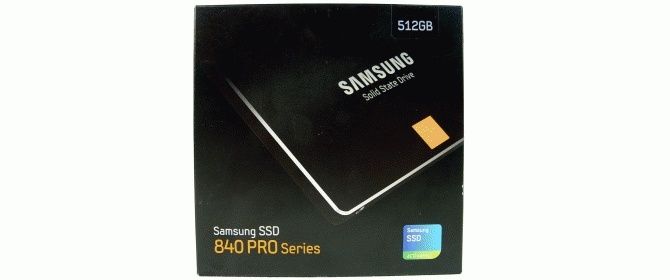 Before then, SSDs were sequential transfer machines, lacking a focus on the small-block random access agility we take for granted today. Some lacked native command queuing, the TRIM command was still a twinkle on the horizon, and many models employed the IDE interface with a SATA bridge. Samsung didn’t join the new-school SSD business until 2010, despite its presence from the beginning, selling Jurassic-period drives to OEMs.
Before then, SSDs were sequential transfer machines, lacking a focus on the small-block random access agility we take for granted today. Some lacked native command queuing, the TRIM command was still a twinkle on the horizon, and many models employed the IDE interface with a SATA bridge. Samsung didn’t join the new-school SSD business until 2010, despite its presence from the beginning, selling Jurassic-period drives to OEMs.
Once the company really started swinging its scepter at the desktop SSD market, its ascension was swift. The 470 was really Samsung’s first foray into the über-competitive consumer space. It was fine in its own right, but was overshadowed by the flood of SandForce-based models (not to mention Intel’s efforts). Then there was the 830, which did well among press and end users alike. Versions of the 830 became some of the first 6 Gb/s SSDs shipping in laptops, most notably those from Apple. Deserving praise was doled out liberally. Samsung had the ability to develop everything in-house, and the 830 showed off the significance of that advantage even more than the 470.
A year later, the company split its consumer offerings into two separate families: the 840 Pro and 840. They’re similar in many ways, except the flagship 840 Pro sports Toggle-mode DDR flash. It’s a great product, one of the fastest we’ve tested, and enthusiasts love it. But in the grand scheme of things, it’s not as important as the 840, built from three-bit-per-cell NAND. Several companies claimed that drives with this memory technology were imminent well before the 840’s launch. However, Samsung was the first to get it done. That wasn’t the drive we were looking for, though. Absurdly low endurance ratings? Crazy high latency? No thanks. In fact, we weren’t sure why the 840 made sense at the time. Back then, capacities were increasing and prices were dropping fast on the familiar MLC-based SSDs.
Samsung’s new 840 EVO
Getting that first TLC-based drive out there wasn’t about selling drives at retail. Rather, it was about locking down the OEM sales that drive the SSD industry.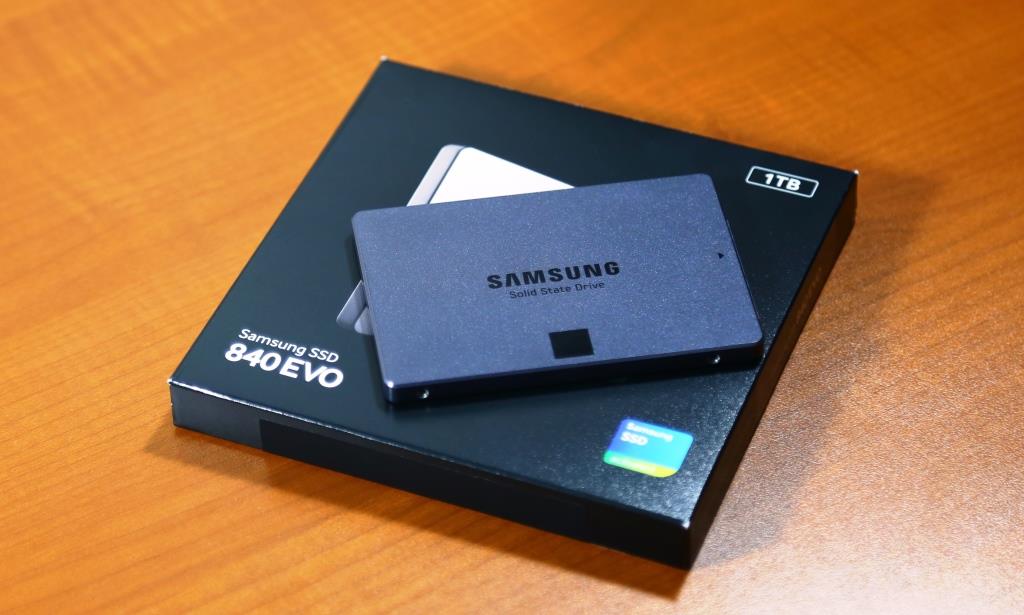 Those OEMs sell a lot of volume and are super price-sensitive. Cutting a few bucks from a drive doesn’t mean a ton to you or me, but dropping the bill of materials on a popular notebook is huge for a company like Apple or Dell.
Those OEMs sell a lot of volume and are super price-sensitive. Cutting a few bucks from a drive doesn’t mean a ton to you or me, but dropping the bill of materials on a popular notebook is huge for a company like Apple or Dell.
And as it turned out, the 840 wasn’t a hopeless dog, either. It didn’t die after 1000 P/E cycles, and it wasn’t particularly slow. In fact, we have a drive that went a full 3207 P/E cycles before it cratered last December. I’ve seen similar results from others, so the endurance debate may be a red herring in consumer workloads. Write performance was modest, and read speeds exceeded most two-bit-per-cell competitors.
Overall, Samsung says the drive was about increasing adoption rates, and the company’s plan seems to have worked. Representatives claim Samsung served up 2,524,699 840s already, good for an astounding 20% of the aftermarket. That means one out of every five SSDs sold through e-tailers since the launch was an 840. If that stat is true, it’s amazing. How do you top such a thing?
How do you top such a thing?
Samsung’s Next-Gen 840: The EVO
We’re not sure if EVO stands for evolution or nothing specific at all. Regardless, the drive’s inner workings, hidden under a new metal chassis, are definitely an improvement on the original 840 and not a ground-up redesign. To be fair, the 840 wasn’t broken, so no fix was necessary. But with a tuned controller, 19 nm NAND, and a technology that Samsung calls Turbo Write, the end result is…different.
Five 840 EVO models are launching early August in most major markets. Switching from 21 nm, 64 Gb die to 19 nm, 128 Gb die allows the EVO to double in capacity. The old 840 topped out at 500 GB; the EVO maxes out at 1 TB. That gives us a line-up with 120, 250, 500, 750, and 1000 GB options. More capacity is always a good thing, particularly since Crucial’s 960 GB M500 suffered poor availability after it launched. The 750 GB model is a little unusual, but we’re down with that, too.
Swipe to scroll horizontally
| Samsung 840 EVO | 120 GB | 250 GB | 500 GB | 750 GB | 1 TB |
|---|---|---|---|---|---|
| MSRP | $110 | $190 | $370 | $530 | $650 |
| Controller | 400 MHz Samsung MEX, three-core ARM Cortex-R4 | ||||
| NAND | 19 nm Samsung Toggle-mode NAND (400 Mb/s), three-bit-per-cell | ||||
| Form Factor/Interface | 2.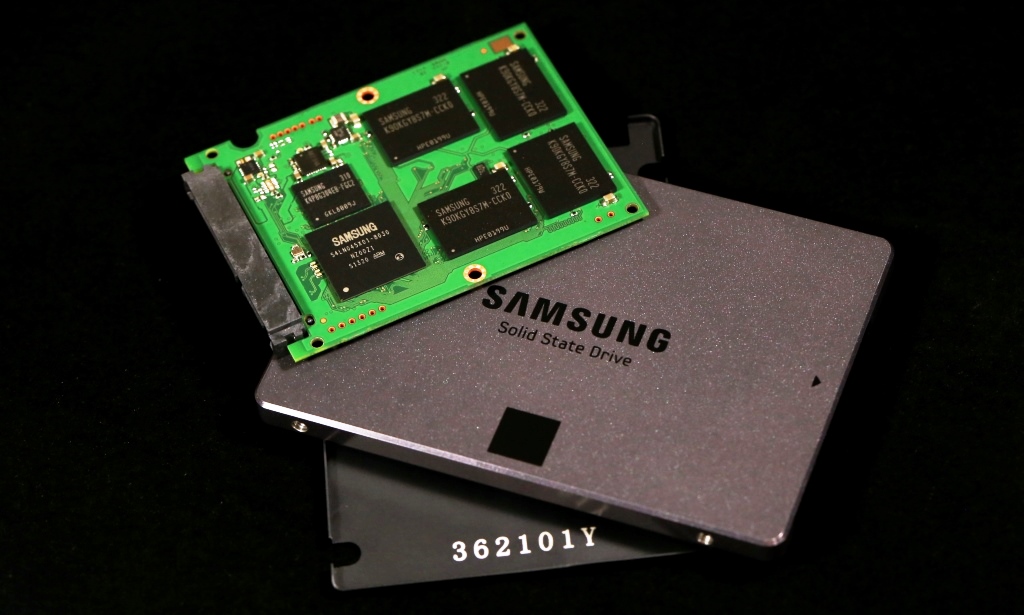 5″, 7 mm Z-height, SATA 6Gb/s 5″, 7 mm Z-height, SATA 6Gb/s |
||||
| Warranty | Three Years | ||||
| Seq. Read/Write (MB/s) | 540 / 410 | 540 / 520 | |||
| Rand. 4 KB Read QD 32 (IOPS) | 94,000 | 97,000 | 98,000 | 98,000 | 98,000 |
| Rand. 4 KB Write QD 32 (IOPS) | 35,000 | 66,000 | 90,000 | 90,000 | 90,000 |
| Rand. 4 KB Read QD 1 (IOPS) | 10,000 | 10,000 | 10,000 | 10,000 | 10,000 |
| Rand. 4 KB Write QD 1 (IOPS) | 33,000 | 33,000 | 33,000 | 33,000 | 33,000 |
| Die Count | 8 | 16 | 32 | 48 | 64 |
That’s five EVO models, stretching from 120 GB to 1 TB. And they’re shipping at the 840’s price points, too. Samsung is really proud of this, though we’d frankly like to see three-bit-per-cell NAND on a smaller process pulling prices down instead of propping them up. In time, perhaps. Likely, the company is hoping that more performance and capabilities are what you’ll focus on.
And they’re shipping at the 840’s price points, too. Samsung is really proud of this, though we’d frankly like to see three-bit-per-cell NAND on a smaller process pulling prices down instead of propping them up. In time, perhaps. Likely, the company is hoping that more performance and capabilities are what you’ll focus on.
A new version of Samsung’s management software, SSD Magician, will also roll out alongside the EVO, sweetening the deal with revamped cloning functionality and a feature called RAPID, which is host-side DRAM caching that works with Windows to push storage performance beyond the limitations of a 6 Gb/s SATA interface.
Speaking of speed-ups, check out those specs. If you’re familiar with the original 840, then you see that the write performance is radically improved. How does Samsung achieve this? We’ll dig deeper on the next page.
- 1
Current page:
The Evolution Of Samsung As An SSD Giant
Next Page The 840 EVO’s Bag Of New Tricks
Get instant access to breaking news, in-depth reviews and helpful tips.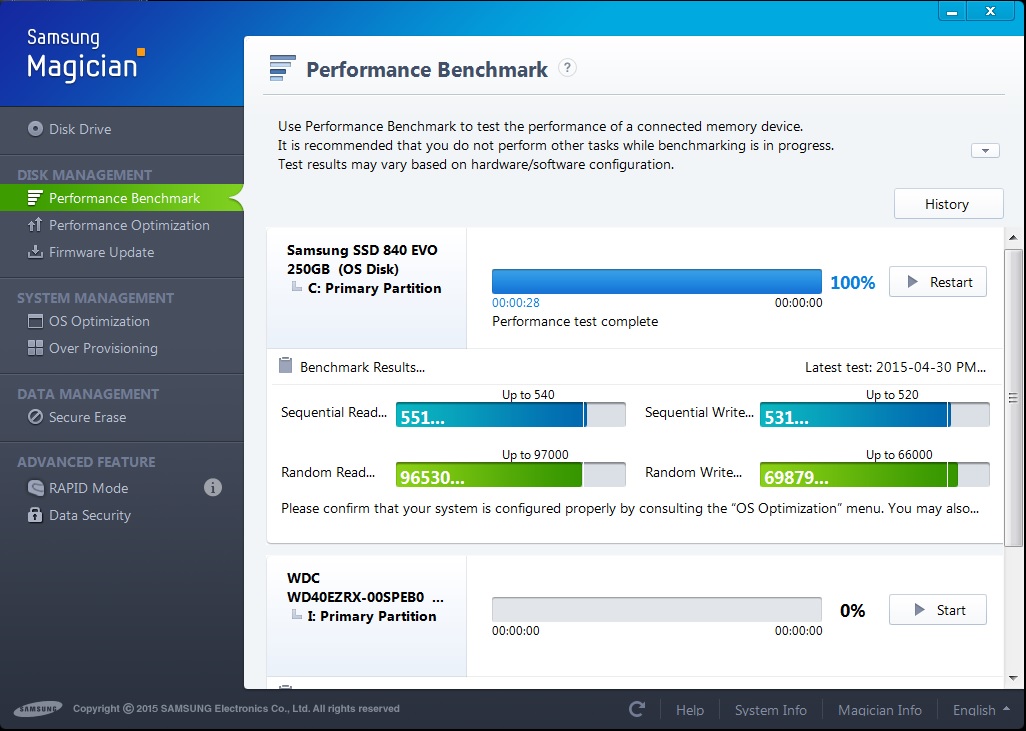
Contact me with news and offers from other Future brandsReceive email from us on behalf of our trusted partners or sponsors
Tom’s Hardware is part of Future US Inc, an international media group and leading digital publisher. Visit our corporate site .
©
Future US, Inc. Full 7th Floor, 130 West 42nd Street,
New York,
NY 10036.
Test and review: Samsung SSD 840 EVO 120, 250 and 500 GB
As the name suggests, the Samsung SSD 840 EVO (lution) is a further improvement of the 840 Basic. But instead of a complete upgrade of the drives, Samsung left the 840 Pro in the high-end SSD segment, replacing only the mainstream model. The updated drive has received the latest technology and features, which should increase its attractiveness in the market. In our article, we will just talk about new features and performance. nine0004
Samsung SSDs are in a unique position in the market because they are the only manufacturer to produce all components for SSD production: controller with firmware, DRAM cache and NAND flash memory.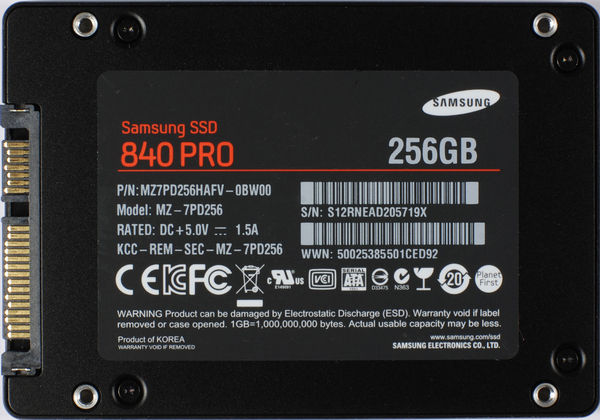 Other manufacturers, such as Micron, usually produce only NAND memory, and the controller is purchased on the side. The advantages of own production of components are obvious. All departments of the company can closely interact with each other during development and testing, quickly solve emerging problems. nine0005 Samsung SSD 840 Series EVO with a new design — the manufacturer abandoned the orange color
Other manufacturers, such as Micron, usually produce only NAND memory, and the controller is purchased on the side. The advantages of own production of components are obvious. All departments of the company can closely interact with each other during development and testing, quickly solve emerging problems. nine0005 Samsung SSD 840 Series EVO with a new design — the manufacturer abandoned the orange color
Perhaps for this reason, Samsung is able to quickly release new technologies to the market. The Samsung SSD 840 Basic is almost a year old, the first TLC SSD for the consumer market, unlike MLC, can store not two, but three bits per cell, which gives a higher recording density. And a lower price level, which is important for end users.
Note: we’ve changed the test system a bit — now we’re using the latest PCMark 7, an outdated graphics card 9We have replaced the 600 GT with a more recent GTX 580. So the PCMark results are no longer consistent with those obtained in our previous tests.
The technical specifications are as follows:
| Manufacturer and model MZ-7TE120BW / MZ-7TE250BW / MZ-7TE500BW |
|
|---|---|
| Retail price | |
| Manufacturer website | www.samsung.com |
| Technical specifications | |
| Form factor | 2.5″ |
| Capacity (manufacturer’s information) | 120 / 250 / 500 GB |
| Capacity (after formatting) | 112 / 233 / 466 GiB |
| Container options | 120 / 250 / 500 / 750 / 1000 GB |
| Cache | 256 / 512 / 512 MB LPDDR3 |
| Controller | Samsung MEX |
| Flash memory | TLC (Toggle, 19 nm) |
| Reading speed (manufacturer information) | 540 MB/s |
| Write speed (manufacturer’s information) | |
| Manufacturer’s warranty | 3 years |
| Delivery set | 3. 5″ mount, SATA data cable, SATA to USB adapter (included in Kit) 5″ mount, SATA data cable, SATA to USB adapter (included in Kit) |
<>Test and review: Samsung SSD 840 EVO at 120, 250 and 500 GB
Samsung 840 EVO in detail (1)
nine0001
On various IT resources, the owners of the Samsung 840 Evo family of solid state drives began to say that the speed of reading some data leaves much to be desired. At the end of September of this year, this became apparent to news sites as well. Perhaps the longest is the 132-page discussion thread on the overclock.net forum, which clearly demonstrates the massive nature of the problem.
Samsung 840 Evo are drives from 120 gigabytes to 1 «honest» terabyte, available in form factors for connecting via SATA and mSATA. Immediately after the introduction, they were one of the best solid state for home use, their price and features remain very attractive even a year after the release of the model. nine0005
The problem occurs with old data recorded more than 30 days ago. This also explains why it was not found in synthetic tests and disk reviews performed by various online and offline technology publications — no one specifically recorded the data and did not wait a month to re-run the read test and compare the results.
This also explains why it was not found in synthetic tests and disk reviews performed by various online and offline technology publications — no one specifically recorded the data and did not wait a month to re-run the read test and compare the results.
TLC NAND memory played a cruel joke, which stores 3 bits per cell, which requires correct calibration of eight voltage levels at once, as shown in the illustration below. It is possible that this calibration for aging records was done incorrectly. Fortunately, the problem is completely solved by updating the firmware using a special utility from the official Samsung website. nine0020
Unable to read the information, the disk performs many repeated read operations. It’s also a lucky coincidence that wear on SSDs is not from reading, but from erasing data, so the drives didn’t suffer much from this bug in the firmware.
For comparison, this is a graph of Samsung 840 Pro disk read speed by user gino074. There are no such problems with this model range.
There are no such problems with this model range.
And this is a graph of the read speed of his own 500 GB Samsung 840 Evo disk connected to the same motherboard, it only worked for a while, and data was written to it. According to user reports, some read speeds dropped to 20 megabytes per second or even lower. nine0005
After a huge number of complaints about the performance of the sky to Samsung engineers, the specialists quickly promised to release a utility to fix this problem in mid-late October. At first, only version 1.0 of the utility was available for Windows, but since the first solution to the problem, a slightly improved version 1.1 and the first DOS version for Linux and Mac OS have already been released.
This is not some kind of «crutch»: the presented utility updates the firmware and completely overwrites the data on the disk, so, by the way, its speed depends on the size of the solid state.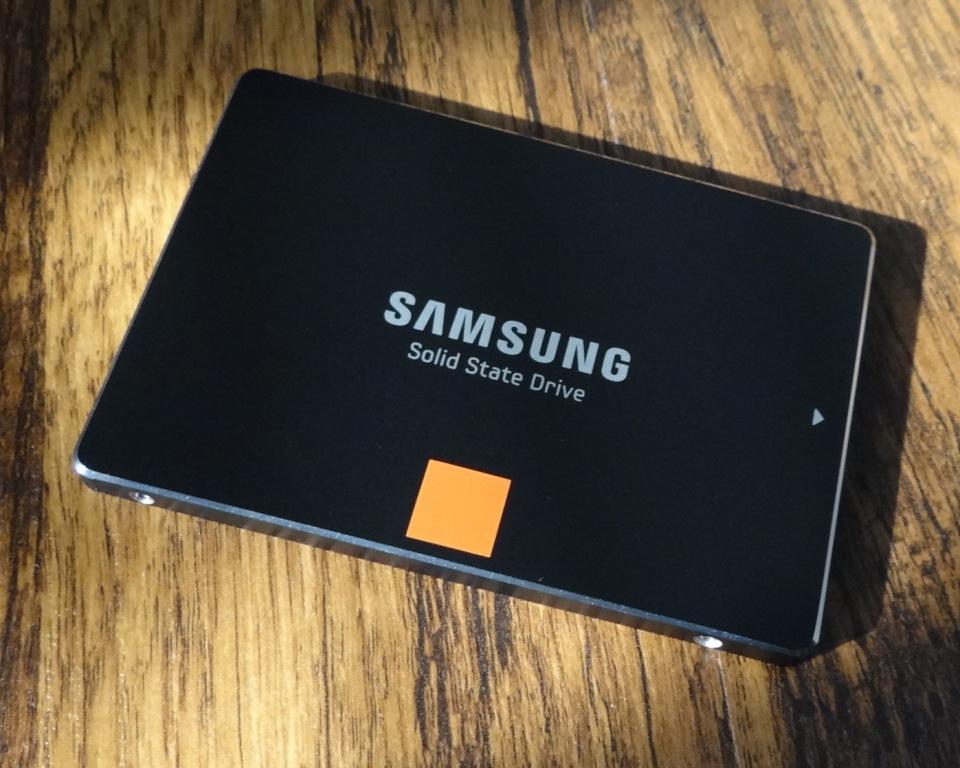 Unlike some drive management software, which users have reported to have a temporary effect (and keep in mind that periodic erasing and overwriting data will wear out the SSD), Samsung’s utility solves the problem completely and permanently. nine0005
Unlike some drive management software, which users have reported to have a temporary effect (and keep in mind that periodic erasing and overwriting data will wear out the SSD), Samsung’s utility solves the problem completely and permanently. nine0005
The Samsung SSD 840 EVO Performance Restoration program has a number of limitations (17 main ones are listed in the manual and several in other parts of the document), here are just the most important ones: .
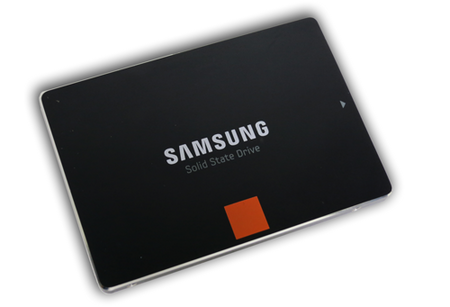 0, you do not need to restore it again with Windows Utility 1.1.
0, you do not need to restore it again with Windows Utility 1.1. The
